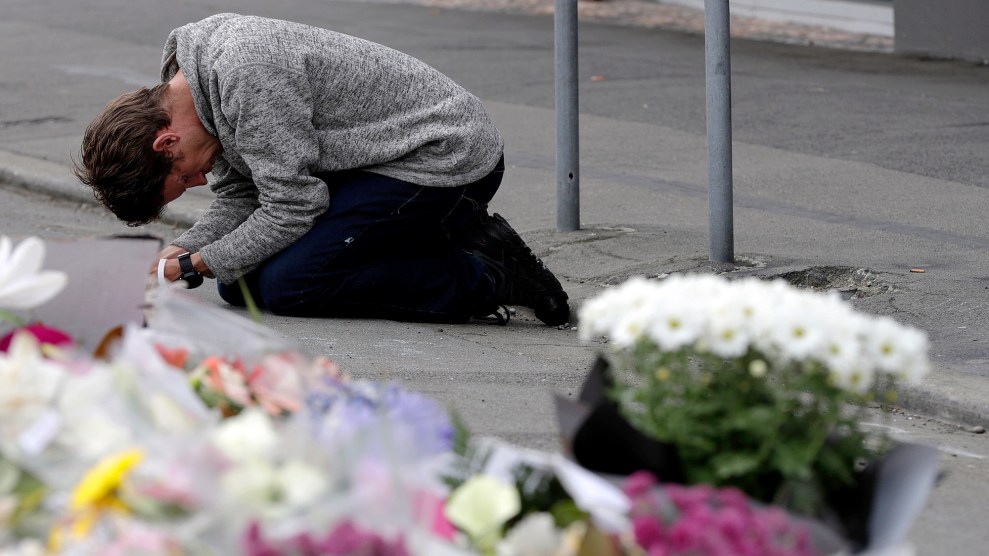
A mourner prays near the Linwood mosque in Christchurch, New Zealand, earlier this week.Mark Baker/AP
Last Friday, a gunman murdered at least 50 people at two mosques in Christchurch, New Zealand. While the terrorist’s exact path to radicalization is still unknown, one thing has become increasingly clear: This was an attack inspired by the internet and crafted for the internet, representing a new level of super-viral violence.
On this week’s episode of the Mother Jones Podcast, we explore how the Christchurch shooter exploited unwitting allies in the form of giant tech companies, which have proven themselves unable or unwilling to stop the spread of hate speech on their platforms. In doing so, the 28-year-old Australian suspect, steeped in far-right hate found in the darkest corners of the internet, instantly turned some of America’s most profitable and influential companies into distributors of a lurid white nationalist recruitment video. Over the weekend, YouTube said it wiped an “unprecedented volume” of video uploads. Facebook announced it removed nearly 1.5 million videos of the attack. Meanwhile, tech titans have been summoned to Capitol Hill by the Chairman of the House Homeland Security Committee, Rep. Bennie G. Thompson (D-Miss.), to explain their response to the shooting.
The shooter essentially issued “a press kit for this type of information to get out,” says Mother Jones reporter Ali Breland, who joined fellow reporter Pema Levy in our Washington, DC, studio for the podcast. “Then [he] gave people following him a way to very clearly find his ideology.”
Also on the show, our national affairs editor, Mark Follman, describes how the rise of a global white supremacist movement combined with the rise of Trumpism to create a highly combustible fuel for this kind of extreme violence.
Listen to the show, and check out our Mother Jones reading list of Christchurch coverage, and our reporting into the rise of white supremacy in the age of Trump, below.
- How the Suspected New Zealand Gunman Weaponized the Internet, by Ali Breland.
- New Zealand Attack Underscores Social Media Sites’ Tolerance of Anti-Muslim Content, by Pema Levy and Tonya Riley.
- Trump Says White Supremacist Terror Is Fake News. These Chilling Cases Prove Otherwise. By Mark Follman.
- Trump Is Fueling a Rising Terror Threat From White Supremacists and Neo-Nazis, by Mark Follman.
- How Trump Took Hate Groups Mainstream, by Sarah Posner and David Neiwert









